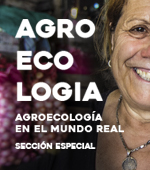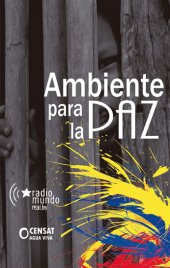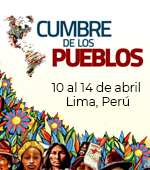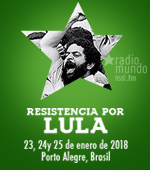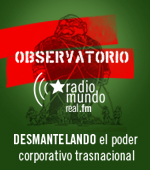English · Español

14 de agosto de 2015 | Entrevistas | Derechos humanos | Luchadores sociales en riesgo
Relentless pain
Interview with photojournalist Mario Marlo on human rights violations in Mexico
Descargar: MP3 (4.4 MB)
While the demand for justice and the end of repression expanded through Mexico and the world for the disappearance of 43 students of the Rural Teacher Training School of Ayotzinapa in the municipality of Iguala, Guerrero state, the country was hit again with a new event that further demonstrates the fragile situation for social activists in that territory. On July 31st, Nadia Vera, Yesenia Quiroz, Rubén Espinosa, Alejandra Negrete and Mile Virginia Martin were killed in the Mexican capital, a fact that brings even closer the words ’terrorism’ and ’State’ in the Mesoamerican country.
Nadia Vera was an anthropologist, a human rights activist, and knew her country well. In an interview with the web channel Rompeviento eight months ago, she said: “We hold [Veracruz] governor Javier Duarte Ochoa and his entire cabinet fully responsible for anything that might happen to those involved and organized in movements of students, scholars and civil societies in general. "
This is the same state of Veracruz that Rubén Espinosa had to leave in a self-imposed exile on July 14th this year due to increasing threats to his person. Espinosa was a photojournalist for the magazine Proceso, among others. In Colonia Narvarte, he and Nadia Vera, together with student Yesenia Quiroz and workers Alejandra Negrete and Virginia Martin, where murdered under what many organizations consider as a femicide.
Contrary to what usually appears in the hegemonic press, the primary root of this increased threats to social activists is not drug trafficking, but the dispute over territories and the struggle for basic human rights. That is the vision of Mario Marlo, a photojournalist for the news portal Somos el medio of the Mexican Federal District, in a recent interview with Real World Radio: “We’re going through a difficult situation due to the power reform started some years ago, and in some states, the dispossession of land, installation of mining, fracking, and wind power companies have been generating a lot of conflict, particularly in indigenous and rural communities.”
The attacks against movements and journalists intensified under the government of Mexican President Enrique Peña Nieto, Marlo explains, noting that this happens to such an extent that journalists have been generating support networks “conducting workshops on security, together with organizations such as Artículo 19”, an organization that works globally to defend the right to free speech.
But the situation in the state of Veracruz, under the rule of Javier Duarte. of the Institutional Revolutionary Party (PRI), is extreme: from the beginning of his mandate (in late 2010) to date, there have been 14 journalists killed in this state. Before Rubén, Moisés Sánchez was killed on January 2nd by an armed group that took him out of his house. He had a very small press media called La Unión, Marlo recalls.
The work of Rubén Espinosa
“Rubén was covering social movements in Veracruz," Marlo starts, answering why the photographer was being harassed and threatened in that state. “In recent years, since the movement Yo Soy 132, Veracruz had a very strong movement of students, and several photographers and journalists covered a lot of this. One of them was Rubén.”
On the basis of this movement, a number of reports, inquiries and accusations against the government of Veracruz of corruption, human rights violations and links to drug trafficking begun to intensify: “Rubén was part of a group of journalists who demanded the clarification of the death of Moisés, Gregorio, and Regina Martínez, the recently killed journalists in Veracruz”, Marlo says.
However, with increasingly intense threats, and knowing the Mexican public agencies responsible for ensuring the safety of journalists and activists have no effects, Espinosa decided leaving the state.
Resistance is found at the territories
In addition to the persecution of students and journalists, the displacement of rural and indigenous communities in Mexico has not stopped, but only seems to be increasing: “The situation is terrible. Just in Chiapas there are plans for building 50 dams; mining companies are getting into many territories of Mexico, particularly in indigenous areas, of course”, says the photographer from Somos el medio.
The persecution does not differ for indigenous and community social activists, Marlo explains: “It’s been very difficult, since they’re small organizations, and the way that they are breaking them is arresting the leaders: in the case of the Yaquis, their leaders have been imprisoned in the state of Sonora; in Guerrero, Nestora Salgado is in jail for being commander of the Community Police; they’ve imprisoned Cemeí Verdía in Ostula, Michoacán; Mireles and other leaders have been jailed too.”
The organization and resistance in Mexico are carried out precisely by those who are threatened in fringe areas, in states like Guerrero, Chiapas, Michoacán and Veracruz: “Outside the cities, from villages that are suffering, from displaced people, from indigenous communities, it’s emerging the resistance and struggle”, the photojournalist concludes.
Imagen: https://asambleaayotzinapacatalunya.files.wordpress.com

